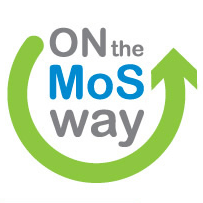The Port of Felixstowe has ordered eight new RTGs with automation and remote control technology from Siemens.
The order marks an important step for Hutchison Ports, which owns and operates the Port of Felixstowe in the UK, as it rolls out automation and remote control systems on STS cranes and RTGs at a growing number of terminals around the world. Last month Felixstowe received its first two remote controlled STS cranes (ZPMC).
The new RTGs will also be built by ZPMC, with Siemens drive, control and automation systems. Siemens is also supplying “simulation, virtual commissioning” and the Remote Control Operator Stations (RCOS), plus all engineering and on-site commissioning. Siemens confirmed to WorldCargo News that the cranes will be powered by a conductor rail. Felixstowe has converted some of its existing RTG fleet to eRTGs using Vahle conductor rails.

Felixstowe is planning to introduce automation in its RTG yard.
“Port of Felixstowe is currently extending their berths 8&9 and yard capacity. The ARTGs purchased will support the additional yard capacity required. Port of Felixstowe decided in order to reduce their ecological footprint to electrify the RTG-cranes and gradually introduce automation in the yard to improve safety and competitiveness. The new cranes will be taken in operation on the new blocks under development, which allows the terminal to continue its commercial operations as usual,” Siemens said in a statement.
Siemens has been promoting the concept of using “digital twins” to simulate and test crane systems prior to delivery, to reduce commissioning time on site. This will be used at Felixstowe, plans to put the automated RTGs into operation in the first quarter of 2019, a very aggressive target.
“Using digital twins of the cranes enables various simulations, allowing for flexibility and providing us the ability to test our automation systems against a virtual crane and simulated environment and create all sorts of work-through scenarios,” said Rink Groenveld, Head of Siemens Cranes Projecthouse. “Implementation of automation modules allowing for collision prevention and automated stacking, integrated safety solutions and Remote Control will lead to safe, productive and consistent operations in the container terminal. These unique features helped Siemens to be chosen as the preferred electrical and automation partner for this important terminal.”
Source: World Cargo News

